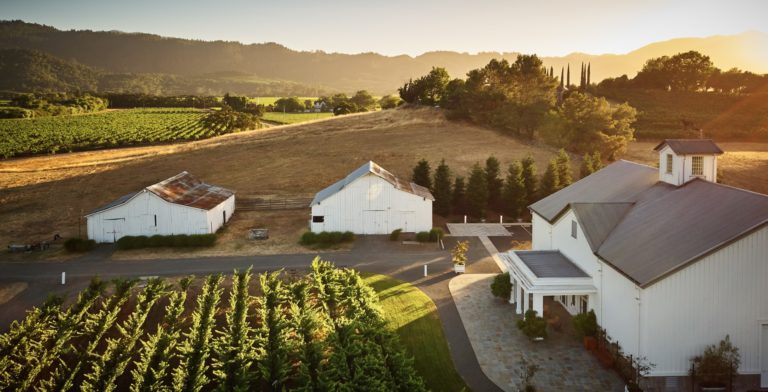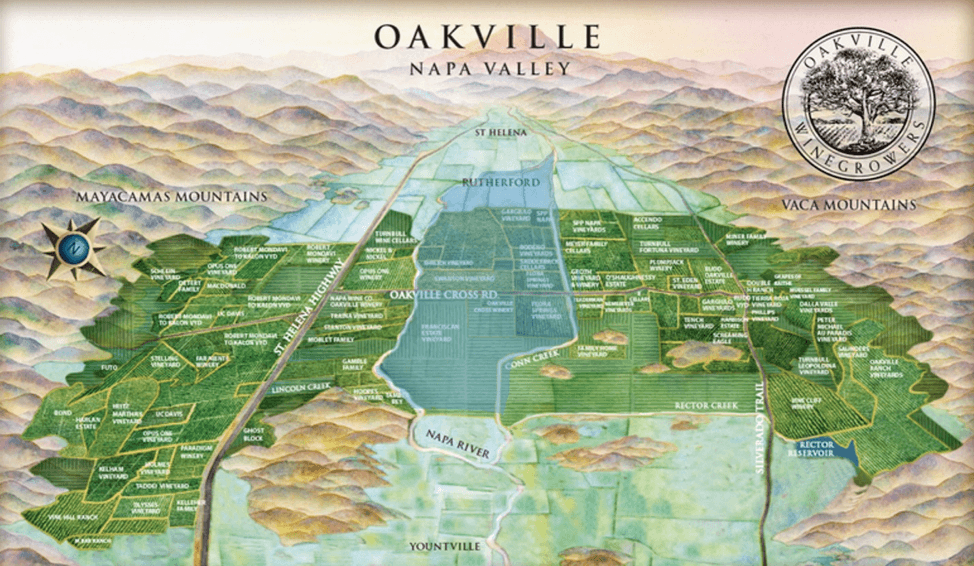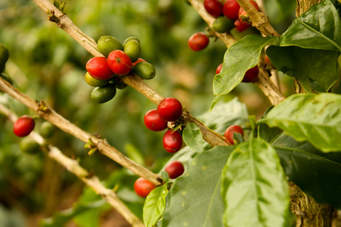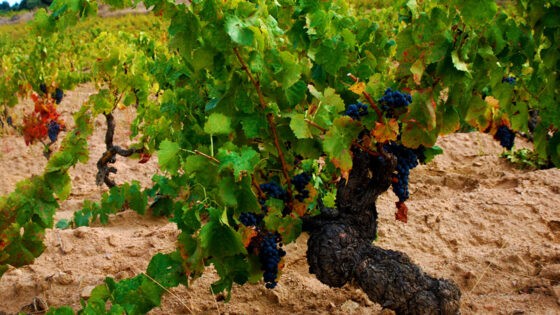
By Deborah Parker Wong
Source: https://cmsauvignon.com/en/napa-valleys-premier-sauvignon-blanc-terroirs/
Associating a relatively warm region better known for its Cabernet-Sauvignon with Sauvignon blanc may seem counterintuitive. But as Deborah Parker Wong shows, not only has Sauvignon found suitable sites in the Napa Valley, it can even excel itself in the right terroirs.
Over the millennia the wandering course of the Napa River and the adjacent Conn Creek have left fluvial gravel deposits scattered across the valley floor. These gravelly sites which are the deepest where the two waterways are closest are defined by silty, clay loam soils that have been Sauvignon Blanc’s preferred and historic Napa Valley terroir.
Mondavi’s original To Kalon I and T vineyard blocks which are sited west of the Napa River in the Oakville AVA were among the valley’s first to exploit Sauvignon Blanc’s potential there. Today, some of the valley’s most expressive wines originate from sites that lie west of the Napa River and between the river and Conn Creek within the Rutherford and Oakville American Viticultural Areas (AVA).
At almost 22,000 acres, plantings of Cabernet Sauvignon dominate the 44,000-acre Napa Valley AVA. The region’s iconic white wines including the Chardonnays of Stony Hill, which sits perched on Spring Mountain, and Mondavi’s Sauvignon Blanc from To Kalon have always been exceptions. Given the market dominance of Cabernet Sauvignon, many would consider it a sacrifice to plant Sauvignon Blanc to terroir that has any potential for premium Cabernet Sauvignon but the wines made by producers who cherish the variety tell a different story.
An ideal combination of factors
Plantings of Sauvignon Blanc in Napa County have crept up by more than 300 acres over the last decade, although the combined acreage of 2,756 for Sauvignon Blanc and Sauvignon Musqué constitutes less than half of the acreage devoted to Chardonnay which is Napa County’s most planted white. Sonoma County has just as much of both Sauvignon Blanc and Musqué under vine and Lake County, where both varieties thrive on colluvial volcanic soils, trails by about 700 acres.[1]
![]()
Sauvignon Blancs from the Napa Valley AVA exhibit a range of style, that leans towards silky and complex with layers of citrus and stone fruit.
![]()
According to the Napa Valley Vintners, there are 235 Napa Valley wineries that currently or have at some point produced Sauvignon Blanc. Historically, the wines have ranged widely in both style and price points. By placing greater emphasis on the ideal combination of terroir factors, attentive farming, and precise picking and winemaking decisions, the Sauvignon Blancs sourced from within the Napa Valley AVA now exhibit a narrower range of style, one that leans towards silky and complex with layers of citrus and stone fruit.
The emergence of the “Super Sauvignons,” a term coined by Karen MacNeil to define Napa Valley Sauvignon Blanc wines that command bottle prices in excess of $50, acknowledges a tipping point for quality and style gains that have helped elevate the profile of the variety. While the “Supers” hail from a number of different Napa Valley terroirs, there are a confluence of wines grown in the fluvial corridors adjacent to the Napa River and Conn Creek.

The Gamble Family Vineyards twelve of which are planted to Sauvignon Blanc span 830 acres in the Oakville AVA.
One of which hails from Gamble Vineyard which with twelve acres under vine is Oakville’s largest producer of estate Sauvignon Blanc. The Gamble Family Ranch dominates the Oakville AVA. It totals 830 acres in size, of which 525 acres are planted to vineyards. At the point designated by a weather station as the very center of Napa Valley is Gamble’s Heart Block vineyard.
As much effort poured into Sauvignon as for Cabs
Third-generation grape grower and vintner Tom Gamble on the terroir: “Because the vineyard is between the two rivers and has a lower elevation, you can watch the fog sit in there an hour longer than it does in Oakville. This factor helps preserve acidity while the cobbled clay soils hold more moisture, giving the fruit a little more juiciness without being watery.”
Gamble planted the vineyard in the direction of the flood flow which has allowed for excellent canopy management of several different clones: Preston, Entav 316 (Sauvignon Blanc FPS 14) and the Musqué clones 22 and 27 which originally came from Oakville Station and French Entav 530[2]. As Musqué drops acid faster here than in the Loire, the site is harvested five to seven times for both the estate and single-vineyard wines.
![]()
The emergence of the “Super Sauvignons,” acknowledges a tipping point for quality and style gains that have helped elevate the profile of the variety.
![]()
When asked about the quality for value of the “Super Sauvignons,” Gamble said, “We’ve worked the price up to $95 for Heart Block but we had to find an audience for it.” To justify the price, Gamble professes that he’s spending as much to make the single vineyard Sauvignon Blanc as he is Cabernet Sauvignon. Other producers of note in Oakville include Groth Vineyards and Winery and Turnbull Wine Cellars.
Further north in the Rutherford AVA, the key sites for Sauvignon Blanc are west of the Napa River with St. Supery’s Estate wine being the foremost example. Cliff Lede includes small percentages of old-vine Semillon from Calistoga and Sauvignon Vert from Chiles Valley in their blend and Round Pond Estate has deep, gravelly sites that produce consistently expressive wines. At $145, the Lail Vineyards “Georgia” is among the wines designated as a “Super.”
Despite the increasing temperatures in upper Napa Valley which is now designated Winkler Four in growing degree days, both Calistoga and St. Helena have their share of superb estate producers. Among them Eisele ($100) and Coquerel Family Wines “Terroir” in Calistoga. Crocker & Starr, Ehlers Estate and Snowden Vineyards produce excellent mid-priced estate wines in the St. Helena AVA.
Oakville AVA: Sauvignon Blanc Soil Snapshot
The soils of the valley floor where the Napa River and Conn Creek flow are defined as fluvial, finer-grained loams that originated up stream and were deposited by flood waters. Conn Creek and the Napa River bisect the AVA from north to south with both leaving relatively deep bands of alluvial river wash that are flanked by Yolo and Pleasanton loam series soils. The western and central regions of the AVA are predominately Bale, Clear Lake and Cole series soils with Bale, Quartina and Perkins soils to the east. Average elevation is about 200 feet and depth to bedrock is over 100 cm with the areas between the Napa River and Conn Creek being very well drained. [3]
[1]California Grape Acreage Crop Report 2018
[2]https://fps.ucdavis.edu/fgrdetails.cfm?varietyid=1352
[3]Soils and Wine Grapes in the Napa Valley AVA, Paul Skinner PhD
Aggiornamenti continui sul mondo dell'enogastronomia












